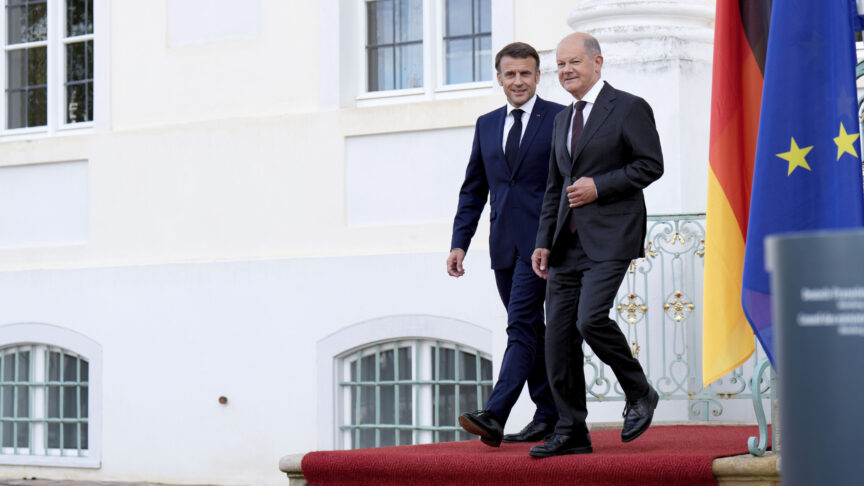Germany should pave the way for a common European Asylum and Migration System
It is time to initiate a common European cathartic proces
Last weekend between 800 to 1000 migrants died when their overloaded vessel capsized on the way from Libya to Europe. It seems to be the peak of what is regularly referred to as the Mediterranean tragedy. However a defining characteristic of what the ancient Greeks called a tragedy is the moment of catharsis.
While one peak of death tolls is following the other, Europe has not been able to respond to what can be called a regular crisis. The tragedy has been continuing for too long. It is time to initiate a common European cathartic process – Germany is in the best position to take a lead in this.
The recent development shows that what might work in military terms does not count for human beings trying to survive. If the pull factor of the search and rescue operation would really exist, the number of people arriving at our shores should have declined after Mare Nostrum ended in October 2014. They didn’t and it is time to conclude that deterrence of migrants doesn’t work this way. With the end of Mare Nostrum the joint Frontex mission Triton was not able to fill the humanitarian gap which yawned wide open.
Ahead of the special European Council meeting on 23 April a number of prominent Europeans including a range of ECFR council members called in an open letter on EU Heads of state or government to immediately restore an expansive search and rescue operation in Mediterranean Sea. These demands echo what Thomas de Maizière, Federal Minister of the Interior in Germany prioritized in his speech to the Bundestag on Wednesday. In this regard the European Council expressed plans to triple the budget of the Triton operation; Angela Merkel even expressed her willingness to provide further funds if necessary.
While it is obvious that immediate and tangible results concerning a humanitarian search and rescue operation are desperately needed, time has come to actively engage on a cathartic process: a systematic mid-and long term strategy for a common European approach.
European leaders should resist to seek easy answers to a complex issue as Frank-Walter Steinmeier said in his speech to the Bundestag earlier this week. He is right; but this should not lead to a missing translating of words into deeds. There are several issues that need to be tackled now.
A first question concerning the extension of the search and rescue Operation already arises from the fact that in the understanding of Fabrice Leggeri,Executive Director of Frontex the agency “cannot have provisions for proactive search-and-rescue action”. If the operation is implemented within the Frontex mandate, the need for an increased democratic control will rise as well as provisions to ensure the respect of fundamental rights during future operations. It remains unclear how the tripling of the Triton mission should meet rising death tolls if the area of operation is not extended.
But the humanitarian dimension can only be the short-term focal point of a common European approach and needs to be flanked with a twofold mid- and long-term effort. Ahead of yesterday’s special European Council meeting Donald Tusk called this “the most difficult, the most and challenging” part of the meeting.
The first is the inner European Dimension: Germany should encourage other member states to work hand in hand to create a common European asylum system truly based on the principle of solidarity. Frank-Walter Steinmeier as well as Thomas de Maizière have underlined their determination to work in that direction.
Such a system would overcome or fundamentally reform the Dublin system as it would need to be based on a fair allocation key that takes certain indicators in host countries into consideration – such as GDP, population, size of territory and unemployment rates. To compensate member states a “migration adjustment fund” could foster integration by supporting investments in infrastructure, schools and welfare on a local level. This would not only ensure member states’ willingness to accept their share of refugees but could counter fears among local population that migrants might be competitors for jobs and welfare.
A common solidary-based asylum system within the EU could lead to the second external dimension: The establishment of provisions to enable refugees and migrants a legal way to enter Europe – a common asylum and immigration law. There are different scenarios of how this could be achieved. One possibility is that the EU could open extraterritorial “EU asylum agencies” along migration routes. It is clear that such a system will be opposed by several member states, as it would touch upon a central aspect of territorial sovereignty. Further coordination with UNCHR could incorporate the already existing system of refugee resettlement in a European system.
Such a twofold approach to initiate a common European answer to the current situation would show that the EU is able to address issues as a coherent actor. The effect of such a catharsis on the way the EU is perceived in the world should not be underestimated. A common European approach could boost European integration. Especially in times of economic crisis, rising nationalistic and populist movements in Europe as well as the Ukraine crisis this could be a strong sign for EU capacity for action. A commission’s communication on a systemic European Agenda for Migration is due in May this year. Given its former opposition, it should be Germany’s duty to lead the way towards a fair allocation mechanism within the EU and the effective implementation of the Common European Asylum and Migration System.
Special thanks for contributions by Darius Reinhardt.
The European Council on Foreign Relations does not take collective positions. ECFR publications only represent the views of their individual authors.


